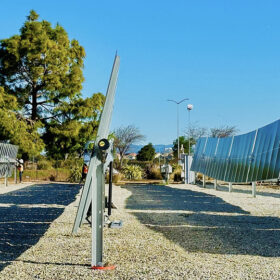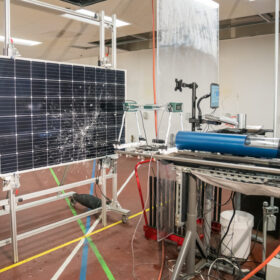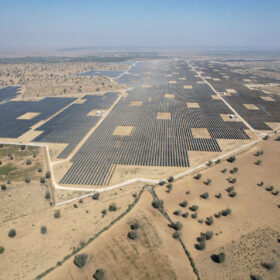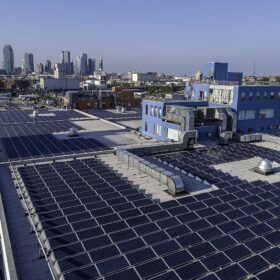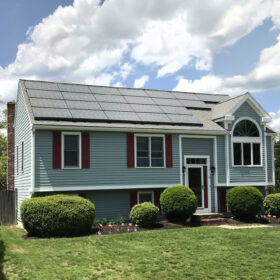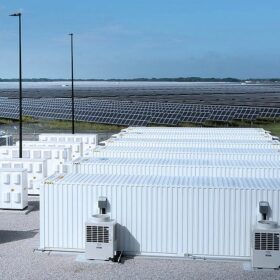Hail damage to solar projects: 1% of filed claims, but over 50% of total losses
Hail damage has become a real headache for project developers in the United States, where growing deployment has increased exposure to weather-related risk. As project owners seek to limit the impact of hail on their bottom line, innovations in tracking systems and insurance can help.
Putting carports on wheels
In the United States, Gismo Power is working on a portable, plug-in approach to reduce the cost of PV carports and has found that regulation is its biggest obstacle. pv magazine spoke with Gismo Power CEO Antonia Ginsberg-Klemmt about her company’s approach and market potential.
Inside perovskite solar cell durability and performance testing
Accurately measuring the performance of perovskite solar cells and modules requires significant modifications to long-established testing standards used in silicon PV. Researchers are settling on methods that rely on up to several minutes of constant light exposure and other time-consuming procedures. These may be fine for the laboratory setting, but those looking to produce this technology at scale need standardized methods that can characterize cells and modules at a much faster rate.
Uncovering UV degradation risks in solar panels
An interview with Fraunhofer ISE on new discoveries of ultraviolet degradation risks.
What can be learned from grid-scale battery fires?
Battery fires, while a rare occurrence given the number of lithium-ion batteries manufactured and deployed each year, are common enough to worry insurers and others in the industry. Following high-profile battery fires in 2024 and 2025, the industry is busy implementing solutions not only to reduce the risk of fire breaking out in the first place, but to contain and mitigate the risk of injury or damage should it happen. Conclusions from large-scale fire testing will be key.
Module reliability scorecard reveals widespread quality risk
Independent testing laboratory Kiwa-PVEL today published the 11th edition of its PV Module Reliability Scorecard, having extensively tested PV modules from 50 different manufacturers.
Amazon buying big on solar
For the past five consecutive years, tech and retail giant Amazon has been the world’s largest procurer of renewable energy, investing in projects and signing power purchase agreements (PPAs) all over the world. pv magazine spoke with representatives of the company about its ambitious energy plans.
Sustainable steel for the solar industry
Steel manufacturing accounts for 8% of global energy demand and 7% of energy-related CO2 emissions, according to the International Energy Agency. The World Steel Association says energy use per ton of steel has dropped by 60% since the 1970s and steel is the world’s most recycled material, but there is still room for improvement. pv magazine’s UP initiative looks at opportunities for the industry to be greener, such as integrating solar and energy storage.
Solving the UV problem of n-type solar
Laboratory testing has revealed that some negatively-doped, “n-type” tunnel oxide passivated contact (TOPCon) and heterojunction (HJT) solar modules are susceptible to ultraviolet (UV) light-related damage and degradation. That could mean trouble down the line, if modules in the field begin to show UV-related performance loss. Manufacturers are implementing solutions at cell and module level.
Interview: Inside solar panel decommissioning
The practical matter of taking a dead PV system apart and moving its components to their next destination has received less attention than recycling and second-life applications. In the United States, Decom Solar is offering decommissioning for commercial and industrial (C&I) solar projects. pv magazine spoke to Decom Solar co-founder Stephen Burns for an update.

